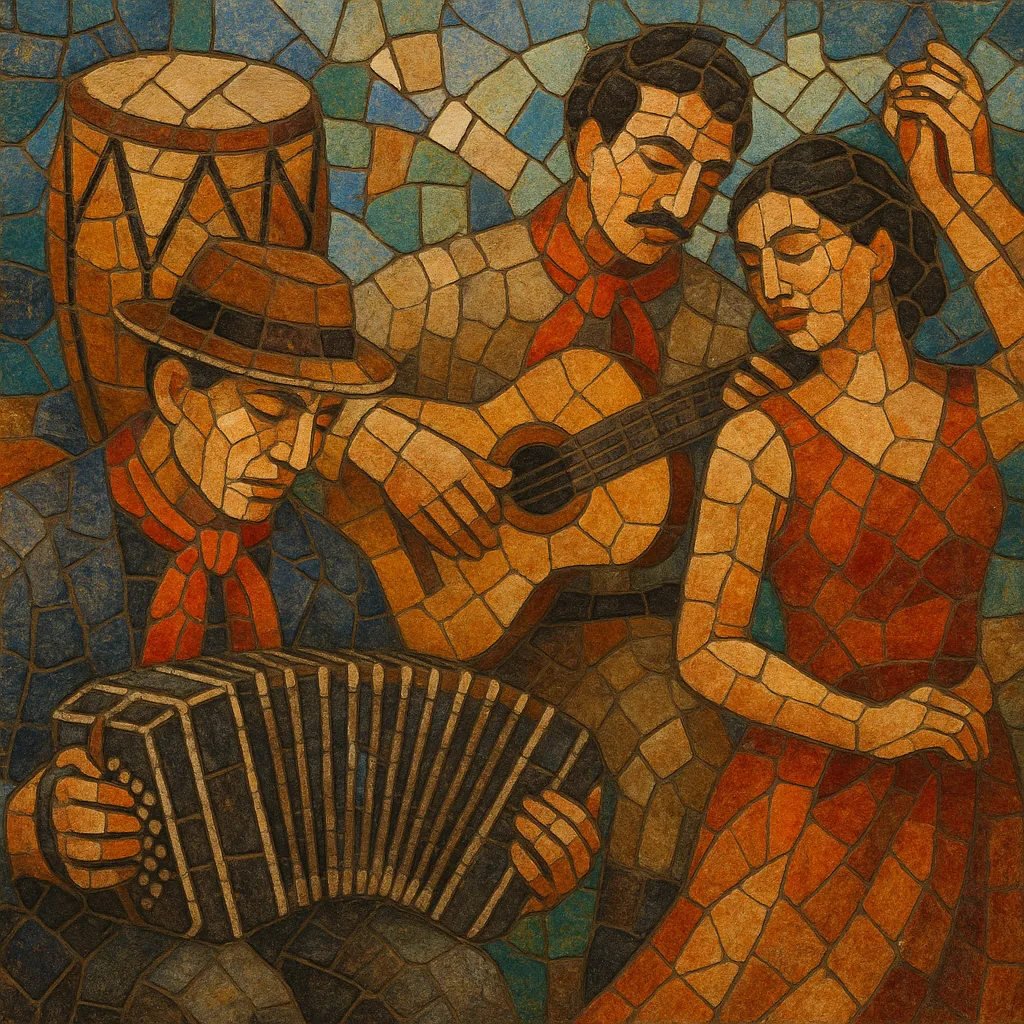Argentine music is an umbrella term for the diverse musical traditions that developed within Argentina, spanning urban and rural, European, African-diasporic, and Indigenous roots. It is best known worldwide for tango, but also encompasses a rich array of folk styles (zamba, chacarera, chamamé, milonga, payada), urban popular music (rock nacional, pop), and contemporary urban scenes (cumbia argentina, trap).
Its sound reflects waves of immigration (notably Spanish and Italian), the legacy of African rhythms via candombe and habanera, and Indigenous Andean and Guaraní influences—absorbed into criollo idioms and later reinterpreted in orchestral, jazz, and rock contexts. This synthesis created a distinct “porteño” urban sensibility in Buenos Aires and equally strong regional identities in the Northwest, Cuyo, the Littoral (litoraleña), and Patagonia.
Argentina’s musical identity coalesced in the 1800s as criollo song (payada) and dance forms (milonga) met European salon music and rural folk practices. Spanish and Italian immigrants brought dances, instruments (guitar, violin, accordion), and song forms, while African-descended communities transmitted candombe and habanera rhythms into the port cities. Indigenous Andean and Guaraní traditions shaped regional repertoires and instruments.
Around the turn of the 20th century, tango emerged in Buenos Aires and Montevideo from the mingling of milonga, candombe, and habanera. It professionalized rapidly, adding the bandoneon and evolving into salon and orchestral formats. The 1930s–40s Golden Age saw orchestra leaders (Osvaldo Pugliese, Aníbal Troilo) and singers (Carlos Gardel) take tango to international fame. In parallel, regional folk styles—zamba, chacarera, cueca, gato, and chamamé—consolidated their distinct rhythms and dances.
Mid-century composers and performers (Atahualpa Yupanqui, Mercedes Sosa) brought rural poetry, social themes, and sophisticated guitar craft to urban audiences. The Nuevo Cancionero movement framed folk as a vehicle for cultural identity and critique, while tango evolved toward concert modernism through Ástor Piazzolla’s “tango nuevo,” integrating jazz harmony, counterpoint, and classical forms.
Despite censorship, an Argentine rock identity (rock nacional) crystallized with artists like Luis Alberto Spinetta, Charly García, Soda Stereo, and Fito Páez, blending Anglo rock with local lyricism and harmonic color. Parallel scenes included jazz (Gato Barbieri), modern tango ensembles, and the growth of cuarteto in Córdoba and chamamé in the Northeast. The 1990s globalized Argentine pop and ska, while cumbia argentina became a core urban dance sound.
Argentina’s music now spans heritage preservation and innovation: contemporary tango, folk-jazz fusions, indie and electronic scenes, and a leading Spanish-language rock and pop ecosystem. A vibrant hip hop and trap wave (e.g., “argentine trap”) and renewed cumbia scenes coexist with academic composition and festival circuits, reflecting the country’s enduring hybrid, cosmopolitan musical character.


